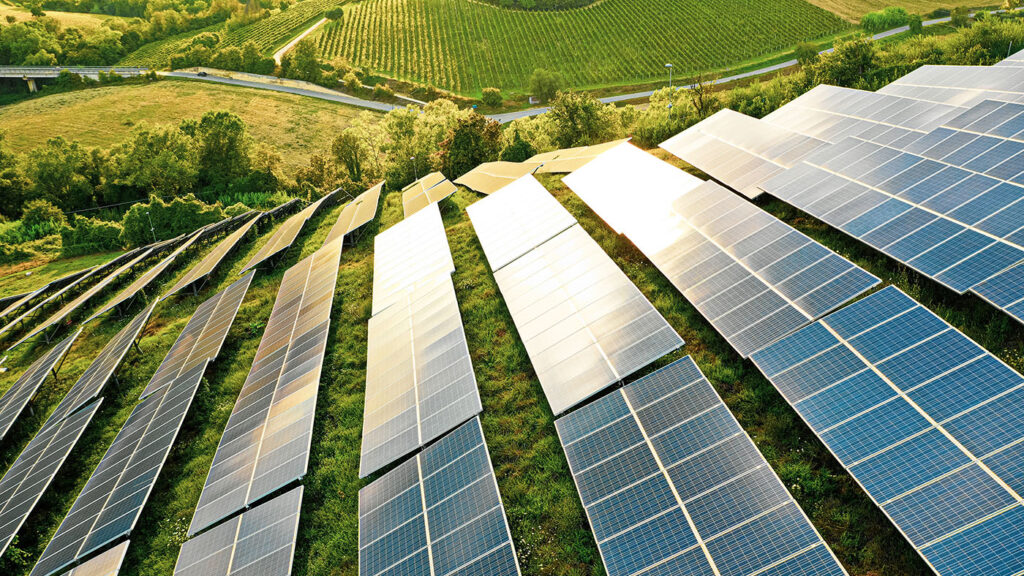We must ensure that economic growth does not come at the expense of our planet. Microsoft seeks to contribute to a sustainable future through a wide range of programs, partnerships, and initiatives that align with the United Nations Sustainable Development Goals (SDGs) adopted by all U.N. member states in 2015. Access to high-quality data is critical to enable measurement and realization of these goals.
Global renewables watch: A living atlas to map earth’s solar and wind energy installations

One way Microsoft’s AI for Good Lab is helping address this challenge is through a newly-announced partnership with Planet Labs PBC (opens in new tab) and The Nature Conservancy (opens in new tab). The project, called the Global Renewables Watch (opens in new tab), is intended to map the entirety of the world’s utility-scale solar and wind installations, and to measure the capacity of these installations using AI and high-resolution satellite imagery. It will allow users to evaluate the progress of every country’s transition to clean energy and track trends over time. It will also provide unique spatial data regarding land use trends to help promote “nature positive” development. This work will help researchers and policymakers make data-driven decisions in renewable energy development.
- Project Geospatial Machine Learning
Supporting climate resilience in the Global South
No nation is immune to the ongoing perils of climate change; however, the Global South has been disproportionately impacted by extreme climate events, including droughts, floods, storms and heatwaves. Between 2008-2018, over 2.2 billion people in the Global South were under high climate risk.1 Access to reliable climate data is crucial in order for governments and decision-makers to navigate and mitigate the worst effects.
The Lab is supporting climate resilience in the Global South by opening two new locations in Egypt and Kenya (opens in new tab). The work of these data labs will be informed by a new Africa AI Innovation Council established by Microsoft and composed of representatives from leading African organizations. We’ve also just launched an expanded collaboration with Planet Labs PBC—our third expansion this year—to combine their high-quality satellite imagery of Africa with our AI technology to accelerate climate adaptation solutions. The work is intended to provide Africa-based data scientists with access to and analysis of satellite imagery from across the African continent. This can better help them address the effects of climate change and develop early warning systems.
Supporting biodiversity and wildlife preservation

(Photo by David Merron Photography/Getty Images)
A quarter of the planet’s wild animal species are threatened with extinction; they must be preserved before it’s too late. The Living Planet Index (opens in new tab) (LPI)—which tracks populations of mammals, birds, fish, reptiles, and amphibians—reveals an average 69% decrease in monitored wildlife populations since 1970, and a decline of 83% for monitored freshwater populations. Wetlands have been reduced by 1/3 and coral reef habitats have declined by 50 percent.2,3 The AI for Good Lab has worked on many projects that promote biodiversity by harnessing AI to analyze large amounts of data collected by conservationists. Remote sensing has become the most powerful tool for conservationists to estimate wildlife populations and understand how animals use their habitats. It is dependent, however, on tremendous amounts of manual data annotation. It can take years for a small NGO to annotate millions of images or audio recordings for a single project.

Our Lab applies machine learning tools to a variety of image sources—including motion-triggered camera traps, aerial cameras, and microphones—to accelerate the work of ecologists. For instance, in 2019 the AI for Good Lab partnered with the nonprofit conservation group Wildlife Protection Solutions, which had gathered a vast and overwhelming amount of image data using remote cameras to monitor the status of different animal species. The Lab helped them implement AI and machine learning tools to analyze and simplify the data.


- Project Bioacoustics
We also work on this problem by taking large volumes of bioacoustics recordings and applying deep learning models to them. This can give bio-scientists profound insights into environmental features, such as the presence or absence of species in the ocean or rainforest. By automatically processing and analyzing bioacoustics data, we can cut detection and annotation time by as much as 93%.
There is an urgent need for acquiring information to help protect our wildlife and preserve our wetlands which have a major impact on carbon sequestration and biodiversity. Some of our current geospatial work includes detecting beluga whales from satellite imagery, wetland mapping and carbon measurement.
Footnotes
1 Internal Displacement Monitoring Centre (IDMC.org) (opens in new tab)
2 WWF: Living Planet Report 2022 (panda.org) (opens in new tab)

